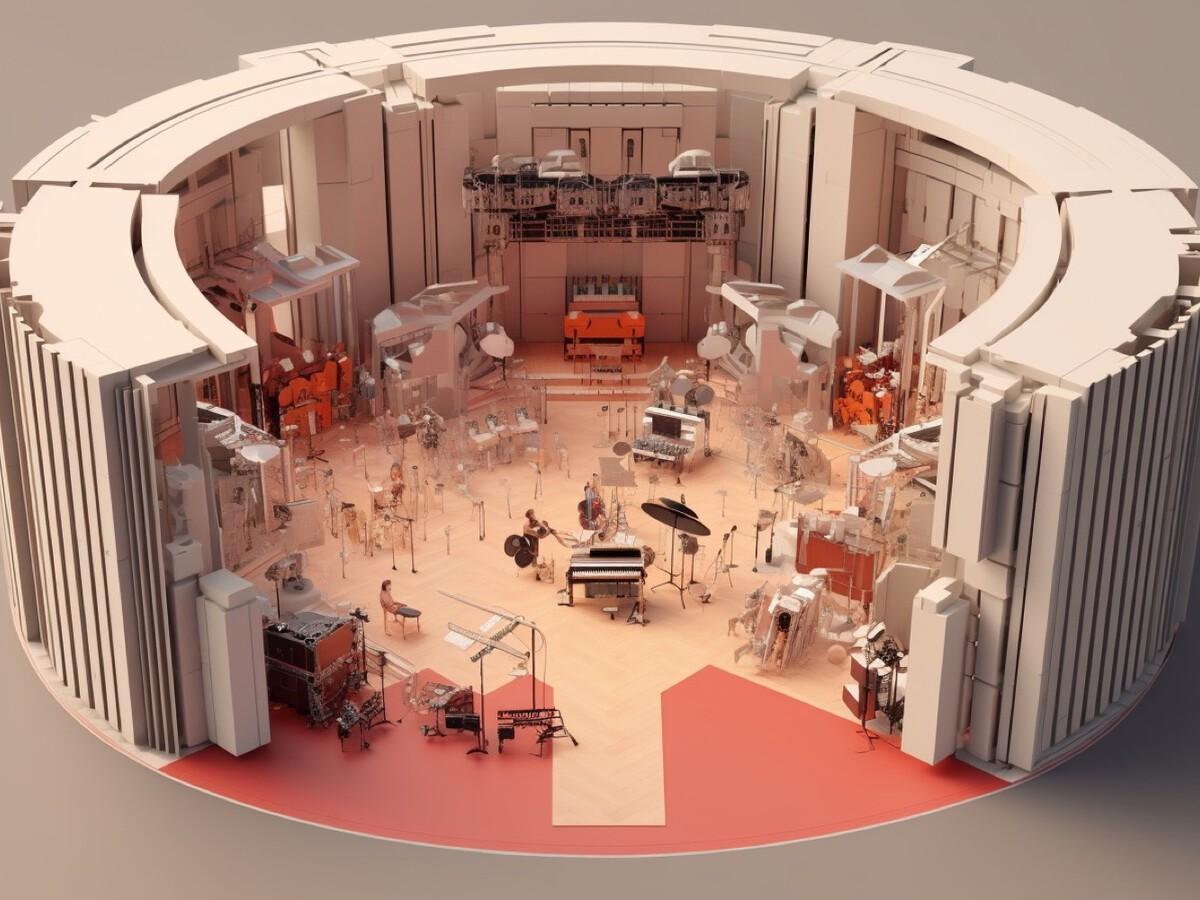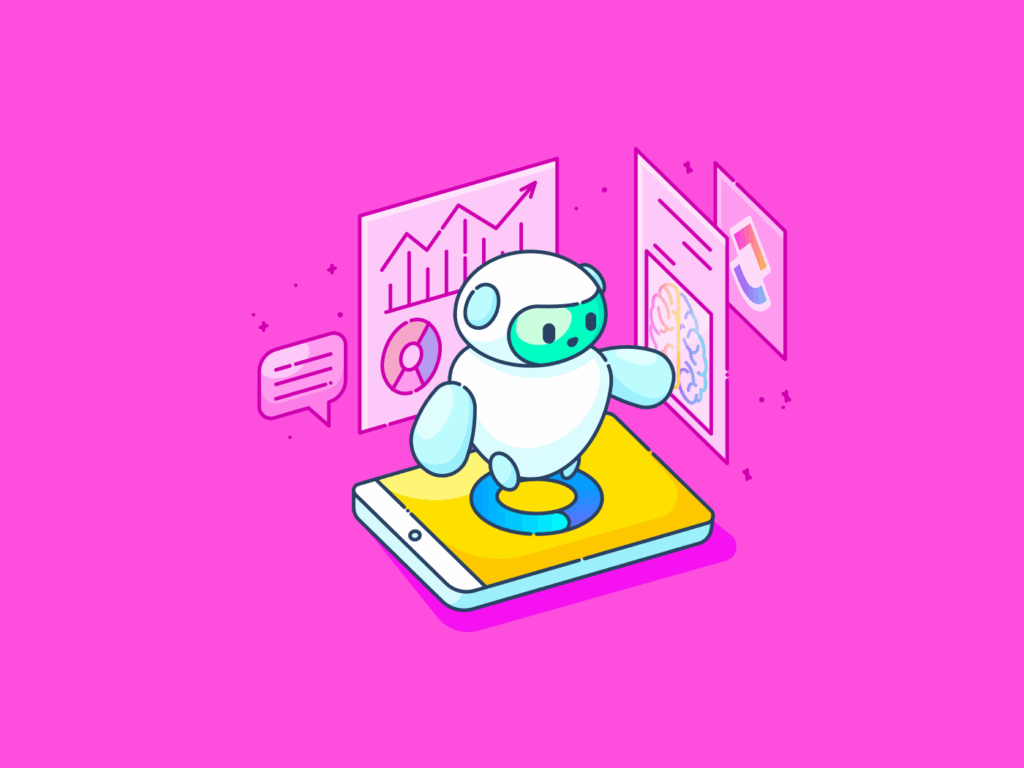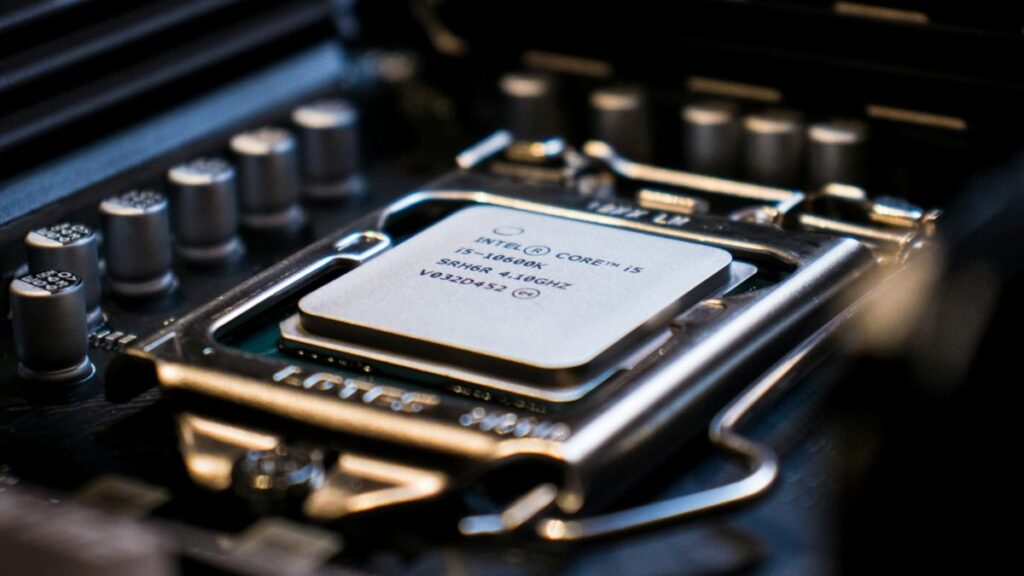- 100% local execution of MusicGen: privacy, control and speed.
- Environment prepared with Python, PyTorch, FFmpeg and Audiocraft.
- Optimize performance by choosing the right model size and GPU.
- Complete creative workflow without relying on cloud storage.

¿How to use Meta's MusicGen locally? Generating music with artificial intelligence without relying on external services is entirely possible today. Meta's MusicGen can run entirely on your computerAvoid uploading samples or results to the cloud and maintain control of your data at all times. This guide walks you through the process step by step, with practical recommendations, performance considerations, and tips that make all the difference.
One of the advantages of working locally is the freedom to experiment without quota limits, without waiting for overloaded servers, and with greater privacy. Unlike cloud solutions such as storage and authentication SDKs designed for mobile appsHere you don't need to delegate your audio to third parties: the models, prompts and generated tracks stay with you.
What is MusicGen and why run it locally?
MusicGen is a music generation model developed by Meta capable of creating pieces from text descriptions and, in some variants, conditioning the result with a reference melody. Their proposal combines ease of use with surprising musical qualityoffering different model sizes to balance fidelity and system resource consumption.
Running the computer locally has several key implications. First, PrivacyYour voice, your samples, and your compositions don't have to leave your machine. Secondly, the iteration speedYou don't depend on bandwidth for uploading files or a remote backend. And finally, technical controlYou can fix library versions, freeze weights, and work offline without surprises from API changes.
It's important to understand the contrast with cloud storage solutions. For example, in the mobile ecosystem, Firebase makes it easy for iOS and other platform developers to save audio, images, and video. through robust SDKs, built-in authentication, and a natural pairing with Realtime Database for text data. This approach is ideal when you need synchronization, collaboration, or rapid publishing. But if your priority is not to upload anything to external serversRunning MusicGen on your own computer avoids that step entirely.
The community also works in your favor. In open and unofficial spaces like r/StableDiffusion, the state of the art of creative tools based on generative models is shared and discussed. It's a place to publish pieces, answer questions, start debates, contribute technology, and explore. Everything that's happening in the music scene. That open-source, exploratory culture fits perfectly with using MusicGen locally: you test, iterate, document, and help others who come after you. You decide the pace and the approach.
If, while researching, you come across technical fragments unrelated to the musical flow—for example, scoped CSS style blocks or front-end snippets— Remember that these aren't relevant for generating sound, but they sometimes appear on resource collection pages. It's helpful to focus on actual audio dependencies and the binaries you'll actually need on your system.
Interestingly, some resource lists include references to academic materials or project proposals in PDF format hosted on university websites. Although they may be interesting for inspirationTo run MusicGen locally, the essentials are your Python environment, the audio libraries, and the model weights.

Requirements and preparation of the environment
Before generating the first note, confirm that your computer meets the minimum requirements. It's possible with a CPU, but the experience is significantly better with a GPU. A graphics card with CUDA or Metal support and at least 6-8 GB of VRAM It allows the use of larger models and reasonable inference times.
Compatible operating systems: Windows 10/11, macOS (Apple Silicon preferred for good performance) and common Linux distributions. You will need Python 3.9–3.11You'll need an environment manager (Conda or venv), and FFmpeg for encoding/decoding audio. On NVIDIA GPUs, install PyTorch with the appropriate CUDA; on macOS with Apple Silicon, the MPS build; on Linux, the one that corresponds to your drivers.
MusicGen model weights are downloaded when you first invoke it from the corresponding libraries (such as Meta's Audiocraft). If you want to operate offlineDownload them beforehand and configure the local paths so that the program doesn't try to access the internet. This is crucial when working in closed environments.
Regarding storage: although tools like Firebase Storage are designed to store and retrieve files in the cloud with powerful authentication and SDKs, Our goal here is to not depend on those servicesSave your WAV/MP3 files in local folders and use Git LFS version control if you need change tracking on binaries.
Finally, prepare the audio I/O. FFmpeg is essential For conversions to standard formats and for cleaning or trimming reference samples. Check that ffmpeg is in your PATH and that you can invoke it from the console.
Step-by-step installation in an isolated environment
I propose a workflow compatible with Windows, macOS, and Linux using Conda. If you prefer venv, adapt the commands. according to your environment manager.
# 1) Crear y activar entorno
conda create -n musicgen python=3.10 -y
conda activate musicgen
# 2) Instalar PyTorch (elige tu variante)
# NVIDIA CUDA 12.x
pip install --upgrade pip
pip install torch torchvision torchaudio --index-url https://download.pytorch.org/whl/cu121
# CPU puro (si no tienes GPU)
# pip install torch torchvision torchaudio
# Apple Silicon (MPS)
# pip install torch torchvision torchaudio
# 3) FFmpeg
# Windows (choco) -> choco install ffmpeg
# macOS (brew) -> brew install ffmpeg
# Linux (apt) -> sudo apt-get install -y ffmpeg
# 4) Audiocraft (incluye MusicGen)
pip install git+https://github.com/facebookresearch/audiocraft
# 5) Opcional: manejo de audio y utilidades extra
pip install soundfile librosa numpy scipyIf your environment does not allow installation from Git, you can clone the repository and create an editable installation. This method makes it easier to set specific commits for reproducibility.
git clone https://github.com/facebookresearch/audiocraft.git
cd audiocraft
pip install -e .Test that everything works in CLI
A quick way to validate the installation is to launch the command-line demo included in Audiocraft. This confirms that the weights are being downloaded and that the inference process is starting. correctly in your CPU/GPU.
python -m audiocraft.demo.cli --help
# Generar 10 segundos de música con un prompt simple
python -m audiocraft.demo.cli \
--text 'guitarra acústica relajada con ritmo suave' \
--duration 10 \
--model musicgen-small \
--output ./salidas/clip_relajado.wavThe first run may take longer because it will download the model. If you don't want outgoing connectionsFirst, download the checkpoints and place them in the cache directory used by your environment (for example, in ~/.cache/torch or the one indicated by Audiocraft) and disable the network.
Using Python: Fine-tuning

For more advanced workflows, invoke MusicGen from Python. This allows you to set the seed, number of candidates, and temperature. and work with tracks conditioned by reference melodies.
from audiocraft.models import MusicGen
from audiocraft.data.audio import audio_write
import torch
# Elige el tamaño: 'small', 'medium', 'large' o 'melody'
model = MusicGen.get_pretrained('facebook/musicgen-small')
model.set_generation_params(duration=12, top_k=250, top_p=0.98, temperature=1.0)
prompts = [
'sintetizadores cálidos, tempo medio, ambiente cinematográfico',
'batería electrónica con bajo contundente, estilo synthwave'
]
with torch.no_grad():
wav = model.generate(prompts) # [batch, channels, samples]
for i, audio in enumerate(wav):
audio_write(f'./salidas/track_{i}', audio.cpu(), model.sample_rate, format='wav')If you want to condition with a melody, use the melody type model and pass your reference clip. This mode respects melodic contours and reinterprets the style according to the prompt.
from audiocraft.models import MusicGen
from audiocraft.data.audio import load_audio, audio_write
model = MusicGen.get_pretrained('facebook/musicgen-melody')
model.set_generation_params(duration=8)
melody, sr = load_audio('./refs/melodia.wav', sr=model.sample_rate)
prompts = ['árpegios brillantes con pads espaciales']
wav = model.generate_with_chroma(prompts, melody[None, ...])
audio_write('./salidas/con_melodia', wav[0].cpu(), model.sample_rate, format='wav')Working offline and managing models
For a 100% local workflow, download the checkpoints and configure environment variables or routes for Audiocraft to find them. Keep an inventory of versions and weights for reproducibility and to prevent accidental downloads if you disable the network.
- Choose model size according to your VRAM: small consumes less and responds faster.
- Save a backup copy of the weights on a local or external disk.
- Document which Audiocraft commit and which PyTorch build you use.
If you use multiple machines, you can create an internal mirror with your libraries and weights. always on a local network and without exposing anything to the internetIt is practical for production teams with strict policies.
Best practices for prompts and parameters
The quality of the prompt is very important. It describes instruments, tempo, atmosphere, and stylistic references. Avoid contradictory requests and keep phrases concise but rich in musical content.
- Instrumentation: acoustic guitar, intimate piano, soft strings, lo-fi drums.
- Rhythm and tempo: 90 BPM, half time, marked groove.
- Atmosphere: cinematic, intimate, dark, ambient, cheerful.
- Production: subtle reverb, moderate compression, analog saturation.
Regarding parameters: top_k and top_p control diversity; temperature adjusts creativity. Start with moderate values and gradually move until you find the sweet spot for your style.
Performance, latency, and quality

With CPU, inference can be slow, especially on larger models and longer durations. On modern GPUs, the times drop drastically.Consider these guidelines:
- Start with 8–12 second clips to iterate ideas.
- Generate several short variations and concatenate the best ones.
- Do upsampling or post-production in your DAW to polish the result.
On macOS with Apple Silicon, MPS offers a middle ground between a dedicated CPU and GPU. Update to recent versions of PyTorch to squeeze out performance and memory improvements.
Post-production and workflow with your DAW
Once you have generated your WAV files, import them into your favorite DAW. Equalization, compression, reverbs and editing They allow you to transform promising clips into complete pieces. If you need stems or instrument separation, rely on source separation tools to recombine and mix.
Working 100% locally doesn't prevent collaboration: simply share the final files through your preferred private channels. There is no need to publish or sync with cloud services if your privacy policy advises against it.
Common problems and how to solve them
Installation errors: incompatible versions of PyTorch or CUDA are usually the cause. Verify that the torch build matches your driver and system. If you're using Apple Silicon, make sure you don't install wheels only for x86.
Downloads blocked: If you don't want your device to connect to the internet, Place the weights in the cache as expected by Audiocraft and disable any external calls. Check read permissions on the folders.
Corrupted or silent audio: check the sample rate and format. Convert your fonts with ffmpeg and maintain a common frequency (e.g., 32 or 44.1 kHz) to avoid artifacts.
Poor performance: reduces model size or clip duration, Close processes that consume VRAM and gradually increase the complexity when you see free margins.
Licensing and responsible use issues
Consult the MusicGen license and any dataset you use for reference. Generating locally does not exempt you from complying with copyright laws.Avoid prompts that directly imitate protected works or artists and opt for general styles and genres.
Conceptual comparison: cloud vs local
For teams that develop apps, services like Firebase Storage offer SDKs with authentication and management of audio, image, and video files, as well as a real-time database for text. This ecosystem is ideal when you need to synchronize users and content.In contrast, for a private creative workflow with MusicGen, local mode avoids latency, quotas, and data exposure.
Think of it as two separate tracks. If you want to publish, share, or integrate results into mobile apps, a cloud-based backend is useful. If your goal is to prototype and create without uploading anythingFocus on your environment, your weight, and your local disk.
How to use Meta's MusicGen locally: Resources and community
Forums and subreddits dedicated to generative tools are a good indicator of new developments and techniques. In particular, there are unofficial communities that embrace open-source projects. where you can publish art, ask questions, start debates, contribute technology, or simply browseCommunity opens doors that formal documentation doesn't always cover.
You will also find proposals and technical documents in academic repositories and university websites, sometimes in downloadable PDFs. Use them as methodological inspirationBut keep your practical focus on real audio dependencies and flows to make MusicGen run smoothly on your machine.
With all of the above, you now have a clear understanding of how to set up the environment, generate your first pieces, and improve results without exposing your material to third parties. The combination of a good local setup, careful prompts, and a dose of post-production It will give you a powerful creative flow, completely under your control. Now you know. How to use Meta's MusicGen locally.
Passionate about technology since he was little. I love being up to date in the sector and, above all, communicating it. That is why I have been dedicated to communication on technology and video game websites for many years. You can find me writing about Android, Windows, MacOS, iOS, Nintendo or any other related topic that comes to mind.